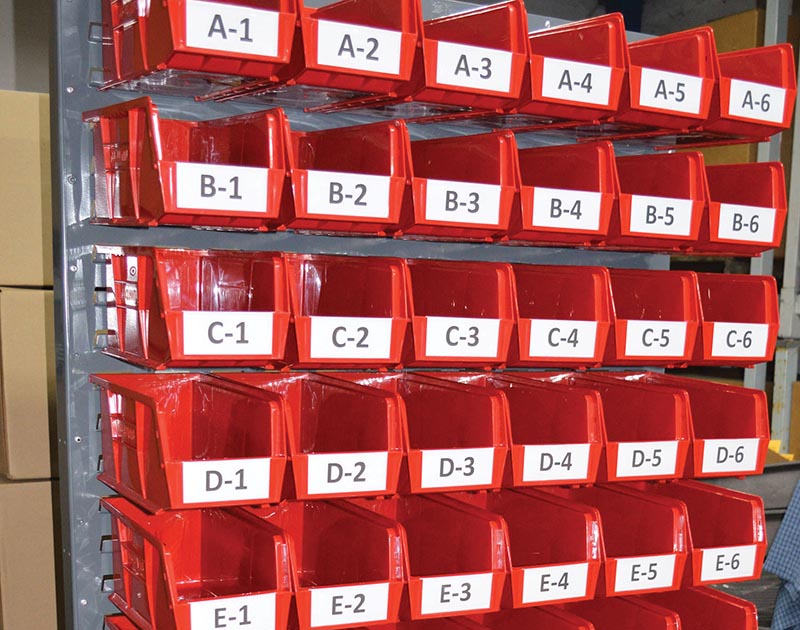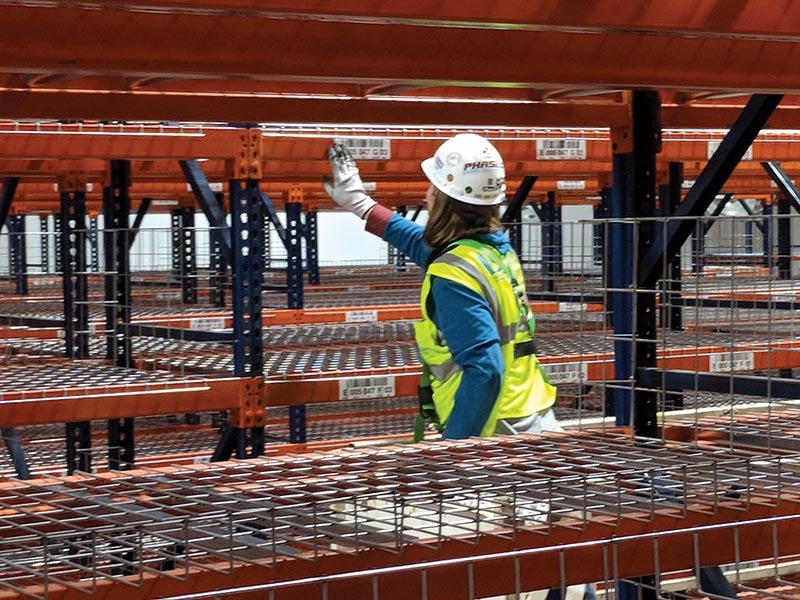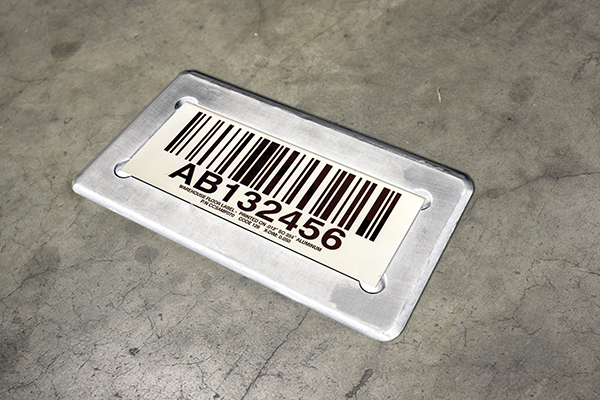Let’s cut to the chase: When was the last time you considered re-labeling your warehouse or distribution center? (There’s typically a long pause about now.) In other words, you probably can’t say when with any certainty off the top of your head. That may not be a good thing.
Just take a minute (right now would be OK) and look around your facility for a few telltale signs that it might be time to re-label.
- Are your floor or rack labels or hanging signs showing wear?
- Are you upgrading to a new warehouse management system (WMS)?
- Has your company gone through an acquisition(s) cycle lately?
- Is e-commerce part of your mix?
- Have the products as well as their volume and velocity changed lately?
Chances are at least one of those five are at play within your four walls. That does not necessarily mean that it is time to re-label, but it’s certainly worth a closer look if any of the five are making an impact on your ability to store, pick and ship with top efficiency.
“Labeling accounts for less than 5% of total warehouse cost but is one of the most important aspects of daily operations. People don’t always realize it, but labels are a big factor in how inventory moves in and out of the facility,” says Mark Aigner, president of Aigner Label Holder Corp.

Getting started
That said, where do you start? The experts from Camcode, ID Label and Aigner all agree on that one: you start when the facility is being planned, not after it’s occupied. “Do it right the first time,” says Gregg Schiltz, chief operating officer of ID Label. “Re-labeling actually starts with labeling the warehouse in the first place,” he adds.
OK, so you didn’t go that route all those years ago, and your recent acquisitions haven’t exactly fit in either. What exactly is a good Plan B?
Melissa Van de Motter, a sales engineer at Camcode, says the best advice is to bring re-labeling into the process early in a DC update or reconfiguration. “Too many people wait until it’s too late to re-label in the most efficient way,” she adds. “Being late with re-labeling doesn’t sound like a big deal until it delays startup of upgraded warehouse operations.
Suppliers also agree that re-labeling requires a thorough understanding of the facility, its environment and processes.
That starts with the DC layout and how it’s changing. Similarly, how might operations be changing? How dynamic is the inventory mix beyond simple velocity of specific items?
There’s also the matter of equipment in the facility. What are the types of rack? Is floor storage part of the mix? How about bulk storage? How do the docks operate both for receiving and shipping? You get the drift here.
Van de Motter adds that the data capture technology is just as important. What are the scanner capabilities and how are they used—up close, medium-range or long range? All of that influences specific labeling decisions (more on that later).
There’s also the matter of the WMS, which controls warehouse activities. It needs the data from the labels to direct operations on the floor. Miss a beat here during re-labeling, and the WMS will be handicapped in its ability to move materials and products through the facility.
As Schiltz explains, ID Label started in 2016 working with home improvement retailer Lowe’s on an 18-month WMS upgrade across 15 DCs handling lumber that arrives on flatbed trailers.
“We revamped the layout and the way we set up inventory locations in each DC to accommodate better processes and workflows,” says Jamie Reiss, senior industrial engineer for Lowe’s flatbed distribution centers. “Everything was mapped down to the inch, including our bar code labels. Now, with our new WMS and mobile bar code scanners, we’ve greatly improved our workflow processes. It’s helped to drive efficiencies and speed across all our DCs and improved communication with stores.”
To get the needed information and manage the re-labeling project requires a designated project lead from the facility, says Schiltz. That person also helps the label supplier to understand the business of the warehouse and how it operates, just as it did at Lowe’s.
And it’s entirely possible that there are some internal requirements including the style and format of the labeling. “In the end, re-labeling is very much a custom project,” Schiltz adds.
By the way, the key points of this Plan B approach work quite well if you take Schiltz’ advice and start with labeling the warehouse in the first place.
Getting down to labels
Now to the matter of getting the labels right. Let’s be clear up front. There is no shortage of label options for the warehouse or DC. That’s good because the job at hand is to re-label and fit current needs, not those that once worked.
An early step is to review the warehouse layout and its specific re-labeling needs, explains Van de Motter. Possibilities go far beyond racks and wire and steel shelving. Floor storage requires different labels. Meanwhile, bulk storage areas and docks might need changes to their hanging signs. And, these are only a few of your options.
Let’s start with racks and shelving. Re-labeling here is much more than scraping off old labels and applying new ones. In fact, the experts all agree that scraping is the worst of the worst. Not only is it highly labor intensive, but most people underestimate the amount of labor needed. The mess of scraping is no more attractive.
But the final issue is how completely did that original label come off the beam? If the old is incompletely removed, the new label will never sit right and function optimally.
That’s where suppliers have stepped in with several other options. These include Beam Renew from ID Label. It does not require scraping and applies directly over the old label. A different but similar style is larger than the old labels and can be applied directly over them, ensuring strong adhesion to the rack beam.
Yet another, which goes back to the first-time advice earlier, is a quick-release label from ID Label. Known as Clean Release, this family of labels is a removable, repositionable label. An advanced adhesive allows for easy installation and removal of the labels, eliminating the traditional removal process for re-labeling. The technology was a finalist in MHI’s Innovation Awards at last month’s Modex 2018 show.
Aigner takes a completely different approach. Rather than labels, it offers label holders. As Mark Aigner explains, holders completely eliminate the need to scrape labels from racks and other locations. Instead, the holder stays in place while the label in it is switched out, saving costs and labor. Once in place, label holders protect bar code and other types of labels from dust and dirt for accurate scans. Holders can be affixed permanently with one type of adhesive or made movable with a reusable adhesive.
There’s also the option to eliminate adhesives altogether—magnetic labels. Depending on the supplier, magnetic labels can be hand-printed or computer-printed, depending on needs. They are easily applied to a metal surface and moved to a new location when re-labeling occurs. In fact, Lennox uses 5,000 customized magnetic rack labels in its warehouse in Georgia.
Moving onto floor storage, at the Modex show Camcode featured a highly durable adhesive floor kit. A picture or other data can be photographically imaged on the aluminum label with an adhesive backing. Other styles include a screw-down aluminum frame for floor labels.
In bulk storage and dock areas, hanging signs are often the best way to go. Camcode’s retro-reflective signs hang from a chain or wire and scanned from distances up to 50 feet. The Lennox DC mentioned earlier uses 1,300 of ID Label’s retro-reflective signs in bulk storage.

Pulling it all together
So, re-labeling the warehouse is part of the DC upgrade plan. Fortunately, you don’t have to go it alone through the evaluate, specify, print and install cycle.
Label suppliers typically offer services to evaluate the DC, determine its needs and make recommendations for re-labeling options. In most cases, the entire process takes less than a month. However, larger facilities may require more time.
Label distributors also figure in the picture. For instance, that was the route Lennox took with its Georgia DC.
Cold storage, especially freezer environments, are a high-profile example where outside expertise is especially valuable. Standard labels are not likely to be the best option. Not only is it a matter of appropriate label selection but adhesive, too. Testing of several options is a standard course before making a final decision. And just as important is the impact of the environment on the installation of the labels. Clearly, special expertise is best.
In the end, re-labeling a warehouse or DC today is a different proposition than it might have been even a few years ago. The simple dynamics of inventory and velocity make re-labeling a more frequent consideration to ensure maximum facility efficiency. Fortunately, there are more options than ever to help you keep pace. In the end, the biggest challenge might well be overcoming inertia in the first place.
Companies mentioned in this article:
Article topics








